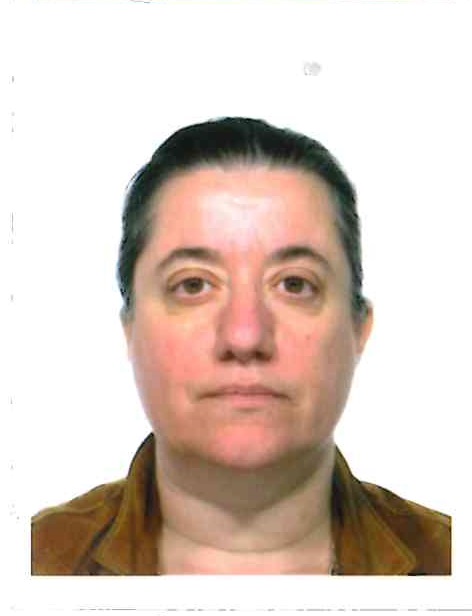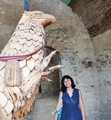Studiare
In questa sezione è possibile reperire le informazioni riguardanti l'organizzazione pratica del corso, lo svolgimento delle attività didattiche, le opportunità formative e i contatti utili durante tutto il percorso di studi, fino al conseguimento del titolo finale.
Calendario accademico
Il calendario accademico riporta le scadenze, gli adempimenti e i periodi rilevanti per la componente studentesca, personale docente e personale dell'Università. Sono inoltre indicate le festività e le chiusure ufficiali dell'Ateneo.
L’anno accademico inizia il 1° ottobre e termina il 30 settembre dell'anno successivo.
Calendario didattico
Il calendario didattico indica i periodi di svolgimento delle attività formative, di sessioni d'esami, di laurea e di chiusura per le festività.
| Periodo | Dal | Al |
|---|---|---|
| ANNUALE | 1-ott-2018 | 1-giu-2019 |
| I semestre | 1-ott-2018 | 12-gen-2019 |
| II semestre | 18-feb-2019 | 1-giu-2019 |
| Sessione | Dal | Al |
|---|---|---|
| ESAMI LINGUE- sessione invernale | 14-gen-2019 | 16-feb-2019 |
| ESAMI LINGUE- sessione estiva | 3-giu-2019 | 27-lug-2019 |
| ESAMI LINGUE- sessione autunnale | 26-ago-2019 | 21-set-2019 |
| Sessione | Dal | Al |
|---|---|---|
| LAUREE LINGUE - sessione autunnale (a.a. 2017/18) | 12-nov-2018 | 17-nov-2018 |
| LAUREE LINGUE - sessione straordinaria (a.a. 2017/18) | 1-apr-2019 | 6-apr-2019 |
| LAUREE LINGUE - sessione estiva (a.a. 2018/19) | 8-lug-2019 | 13-lug-2019 |
| LAUREE LINGUE - sessione autunnale (a.a. 2018/19) | 4-nov-2019 | 9-nov-2019 |
| LAUREE LINGUE - sessione straordinaria (a.a. 2018/19) | 30-mar-2020 | 4-apr-2020 |
| Periodo | Dal | Al |
|---|---|---|
| Festa di Ognissanti | 1-nov-2018 | 1-nov-2018 |
| Sospensione dell'attività didattica | 2-nov-2018 | 3-nov-2018 |
| Festa dell’Immacolata | 8-dic-2018 | 8-dic-2018 |
| VACANZE DI NATALE | 22-dic-2018 | 6-gen-2019 |
| VACANZE DI PASQUA | 19-apr-2019 | 23-apr-2019 |
| Sospensione dell'attività didattica | 24-apr-2019 | 24-apr-2019 |
| Festa della liberazione | 25-apr-2019 | 25-apr-2019 |
| Festa del lavoro | 1-mag-2019 | 1-mag-2019 |
| Sospensione dell'attività didattica | 20-mag-2019 | 20-mag-2019 |
| Festa del Santo Patrono | 21-mag-2019 | 21-mag-2019 |
| Festa della Repubblica | 2-giu-2019 | 2-giu-2019 |
| VACANZE ESTIVE | 13-ago-2019 | 18-ago-2019 |
Calendario esami
Gli appelli d'esame sono gestiti dalla Unità Operativa Segreteria Corsi di Studio Lingue e letterature straniere.
Per consultazione e iscrizione agli appelli d'esame visita il sistema ESSE3.
Per problemi inerenti allo smarrimento della password di accesso ai servizi on-line si prega di rivolgersi al supporto informatico della Scuola o al servizio recupero credenziali
Per dubbi o domande leggi le risposte alle domande più frequenti F.A.Q. Iscrizione Esami
Docenti
 daniele.beltrame@univr.it
daniele.beltrame@univr.it
 bernardo.calabrese@univr.it
bernardo.calabrese@univr.it
 silvia.cavalieri@univr.it
silvia.cavalieri@univr.it
 riccardo.cella@univr.it
riccardo.cella@univr.it
 elisa.dallarosa@univr.it
elisa.dallarosa@univr.it
 katiuscia.darici@univr.it
katiuscia.darici@univr.it
 sara.dattoma@univr.it
sara.dattoma@univr.it
 jacopo.galavotti@univr.it
jacopo.galavotti@univr.it
 diegogabriel.krivochen@univr.it
diegogabriel.krivochen@univr.it
 stefania.montemezzo@univr.it
stefania.montemezzo@univr.it
 chunye.niu@univr.it
chunye.niu@univr.it
 simone.pregnolato@univr.it
simone.pregnolato@univr.it
 fabioantonio.scrignoli@univr.it
fabioantonio.scrignoli@univr.it
 tania.triberio@univr.it
tania.triberio@univr.it
 sonia.trovato@univr.it
sonia.trovato@univr.it
 francesco.zuin@univr.it
francesco.zuin@univr.it
Piano Didattico
Il piano didattico è l'elenco degli insegnamenti e delle altre attività formative che devono essere sostenute nel corso della propria carriera universitaria.
Selezionare il piano didattico in base all'anno accademico di iscrizione.
1° Anno
| Insegnamenti | Crediti | TAF | SSD |
|---|
1a lingua straniera 2a lingua straniera1a letteratura e cultura stranieraLetteratura e cultura tedesca 1
2a letteratura e cultura stranieraLetteratura e cultura tedesca 1
2° Anno Attivato nell'A.A. 2019/2020
| Insegnamenti | Crediti | TAF | SSD |
|---|
1a lingua straniera2a lingua straniera1a letteratura e cultura straniera o materia d'areaDeutsche Literatur und Kultur 2
English literature and culture 2
Literatura y cultura española 2
Littérature et culture françaises 2
2a letteratura e cultura straniera o materia d'areaDeutsche Literatur und Kultur 2
English literature and culture 2
Literatura y cultura española 2
Littérature et culture françaises 2
Letteratura e cultura italiana
Teoria e tecnica della comunicazione
Geografia delle comunicazioni e del commercio internazionale
Storia economica contemporanea
3° Anno Attivato nell'A.A. 2020/2021
| Insegnamenti | Crediti | TAF | SSD |
|---|
1a lingua straniera2a lingua stranieraDiritto pubblico comparato ed europeo
Principi di marketing internazionale
| Insegnamenti | Crediti | TAF | SSD |
|---|
1a lingua straniera 2a lingua straniera1a letteratura e cultura stranieraLetteratura e cultura tedesca 1
2a letteratura e cultura stranieraLetteratura e cultura tedesca 1
| Insegnamenti | Crediti | TAF | SSD |
|---|
1a lingua straniera2a lingua straniera1a letteratura e cultura straniera o materia d'areaDeutsche Literatur und Kultur 2
English literature and culture 2
Literatura y cultura española 2
Littérature et culture françaises 2
2a letteratura e cultura straniera o materia d'areaDeutsche Literatur und Kultur 2
English literature and culture 2
Literatura y cultura española 2
Littérature et culture françaises 2
Letteratura e cultura italiana
Teoria e tecnica della comunicazione
Geografia delle comunicazioni e del commercio internazionale
Storia economica contemporanea
| Insegnamenti | Crediti | TAF | SSD |
|---|
1a lingua straniera2a lingua stranieraDiritto pubblico comparato ed europeo
Principi di marketing internazionale
| Insegnamenti | Crediti | TAF | SSD |
|---|
Legenda | Tipo Attività Formativa (TAF)
TAF (Tipologia Attività Formativa) Tutti gli insegnamenti e le attività sono classificate in diversi tipi di attività formativa, indicati da una lettera.
English language 2 [Tur] (2019/2020)
Codice insegnamento
4S002919
Docente
Coordinatore
Crediti
9
Lingua di erogazione
Inglese
Settore Scientifico Disciplinare (SSD)
L-LIN/12 - LINGUA E TRADUZIONE - LINGUA INGLESE
Periodo
II semestre (Lingue e letterature straniere) dal 17-feb-2020 al 30-mag-2020.
Obiettivi formativi
Il corso intende portare gli studenti a sviluppare e consolidare la propria competenza negli aspetti sintattici, semantico-lessicali e di analisi della coesione e coerenza del testo e della lingua inglese contemporanea, con attenzione anche alle varietà e ai generi testuali, con particolare riferimento all’ambito del turismo e del commercio internazionale.
È inoltre prevista l'acquisizione di una competenza linguistica in lingua inglese corrispondente al livello C1 (limitatamente alle abilità di comprensione dell'ascolto e della lettura del testo) del Quadro comune europeo di riferimento per la conoscenza delle lingue.
Programma
Durante il corso di affronteranno i seguenti argomenti:
1. sintassi
- definizione e inquadramento nella letteratura di riferimento
- classi di parole e sintagmi
- frasi semplici e complesse
2. semantica
- definizione e inquadramento nella letteratura di riferimento
- la struttura del lessico inglese
- livelli di significato
3. Use of English
- testo, co-testo e contesto
- definizione di pragmatica
- massime conversazionali e violazioni
- atti linguistici diretti e indiretti
I contenuti e la bibliografia di riferimento saranno costantemente aggiornati. La versione finale del programma sarà resa disponibile alla fine del corso.
I contenuti dell’esame sono i medesimi per studenti frequentanti e non frequentanti. I materiali utilizzati (slides) durante le lezioni saranno resi disponibili sulla piattaforma Moodle.
Gli studenti non frequentanti sono invitati a prendere contatti con la docente durante l'orario di ricevimento o via mail per ottenere la password dell'aula virtuale.
Esame scritto:
la prova verterà sugli argomenti affrontati durante le lezioni.
Il test scritto consisterà in domande aperte e domande a risposta multipla volte ad accertare la conoscenza dei contenuti affrontati durante le lezioni. Le domande a scelta multipla mireranno a valutare le conoscenze teoriche e le domande a risposta aperta saranno utili per valutare l’abilità degli studenti di applicare le conoscenze teoriche all’analisi di testi.
Durante l’ultima lezione sarà effettuata una silmulazione dell’esame.
Il voto finale dell'esame sarà costituito dalla media del voto dell'esame scritto e quello ottenuto nella prova informatizzata del CLA. Quest'ultima sarà convertita in trentesimi secondo la tabella di conversione CLA. Gli studenti in possesso di certificati linguistici esterni sono invitati a ottenere il certificato di equipollenza del CLA prima della data dell'esame.
Prerequisiti - Lo studente può sostenere l'esame solamente dopo aver ottenuto la certificazione di competenza linguistica C1 informatizzato e aver precedentemente sostenuto gli esami English Language 1 e English Literature and Culture 1.
| Autore | Titolo | Casa editrice | Anno | ISBN | Note |
|---|---|---|---|---|---|
| Kuiper, K. and W. S. Allan | An Introduction to English Language: Word, Sound and Sentence (4th edition) (Edizione 4) | Palgrave Macmillan | 2016 | ||
| Aarts, Bas | English Syntax and Argumentation. Second edition. CHAP. 1-2-3-4 | Palgrave | 2001 | ||
| Cruse Alan | Meaning in Language. An Introduction to Semantics and Pragmatics (Edizione 3) | Oxford University Press | 2010 | 9780199559466 |
Modalità d'esame
Esame scritto:
la prova verterà sugli argomenti affrontati durante le lezioni.
Il test scritto consisterà in domande aperte e domande a risposta multipla volte ad accertare la conoscenza dei contenuti affrontati durante le lezioni. Le domande a scelta multipla mireranno a valutare le conoscenze teoriche e le domande a risposta aperta saranno utili per valutare l’abilità degli studenti di applicare le conoscenze teoriche all’analisi di testi.
Durante l’ultima lezione sarà effettuata una silmulazione dell’esame.
Il voto finale dell'esame sarà costituito dalla media del voto dell'esame scritto e quello ottenuto nella prova informatizzata del CLA. Quest'ultima sarà convertita in trentesimi secondo la tabella di conversione CLA. Gli studenti in possesso di certificati linguistici esterni sono invitati a ottenere il certificato di equipollenza del CLA prima della data dell'esame.
Prerequisiti - Lo studente può sostenere l'esame solamente dopo aver ottenuto la certificazione di competenza linguistica C1 informatizzato e aver precedentemente sostenuto gli esami English Language 1 e English Literature and Culture 1.
Tipologia di Attività formativa D e F
Per scoprire tutte le attività didattiche accreditate dal Collegio didattico clicca qui
Prospettive
Avvisi degli insegnamenti e del corso di studio
Per la comunità studentesca
Se sei già iscritta/o a un corso di studio, puoi consultare tutti gli avvisi relativi al tuo corso di studi nella tua area riservata MyUnivr.
In questo portale potrai visualizzare informazioni, risorse e servizi utili che riguardano la tua carriera universitaria (libretto online, gestione della carriera Esse3, corsi e-learning, email istituzionale, modulistica di segreteria, procedure amministrative, ecc.).
Entra in MyUnivr con le tue credenziali GIA: solo così potrai ricevere notifica di tutti gli avvisi dei tuoi docenti e della tua segreteria via mail e a breve anche tramite l'app Univr.
Area riservata studenti
Gestione carriere
Assegnazione tutore
Attività accreditate D/F
Calendario didattico dettagliato
Cambio lingua curriculare
Competenze informatiche
Competenze linguistiche (prima e seconda lingua)
Competenze linguistiche in triennale (terza lingua CFU F)
Compilazione del piano didattico
Corso di Lingua portoghese
Erasmus+ e altre esperienze all'estero
Esercitazioni Linguistiche CLA
Presentazione dei corsi di studio e Open day
Prova finale
La prova finale, a cui vengono attribuiti 6 CFU consiste nella preparazione e discussione di un elaborato scritto su materia di uno degli insegnamenti in cui siano stati acquisiti almeno 6 CFU.
La discussione dell'elaborato scritto avviene in presenza di una Commissione Istruttoria composta da due docenti dell'Ateneo che si riunisce nei giorni precedenti la proclamazione e che propone alla Commissione di Laurea (composta da almeno tre docenti) una valutazione. Alla prova finale potranno essere attribuiti non più di 5 punti su 110. L'attribuzione della lode avviene o su proposta del relatore, se l'elaborato è ottimo e la media dei voti conseguiti negli esami dallo Studente raggiunge almeno 110 punti, o in maniera automatica se la media raggiunge almeno 113 punti.
Il voto di laurea è formato da:
a) la media aritmetica dei voti conseguiti negli esami, rapportata a 110,
b) la valutazione dell'elaborato finale,
c) punti supplementari di incentivazione:
- un massimo di 2 punti per le lodi (1 punto per due lodi, 2 punti per più lodi).
- 2 punti per la partecipazione al Programma Erasmus o assimilato, a condizione che lo studente: abbia acquisito almeno 12 CFU per un semestre di mobilità nel corso del ciclo di studi (24 CFU per due semestri di mobilità) e consegua il titolo finale entro la durata normale del corso di studi.
- 1 punto per la partecipazione al Programma Erasmus o assimilato, a condizione che lo studente: abbia acquisito almeno 12 CFU per un semestre di mobilità nel corso del ciclo di studi (24 CFU per due semestri di mobilità) e consegua il titolo finale anche oltre la durata normale del corso di studi.
- Lo studente vincitore del bando del Ministero dell’Università per assistente di lingua italiana all’estero o di borsa Comenius presso scuole di 1° e 2° grado dell’Unione Europea otterrà un punteggio supplementare, che sarà aggiunto alla media finale del voto di laurea: 1 punto, per una esperienza di assistentato fino a 6 mesi; 2 punti, per una esperienza di assistentato superiore a 6 mesi.
Non possono essere attribuiti punti di incentivazione per qualsiasi esperienza all’estero svolta dallo studente su iniziativa privata, anche se riconosciuta come equipollente dal Dipartimento/Collegio Didattico.
- 2 punti per la conclusione degli studi in corso (solo per gli studenti di prima immatricolazione, senza il riconoscimento della carriera pregressa o sospensione di carriera).
Adempimenti amministrativi, scadenze domanda di laurea, calendari delle discussioni elaborato finale e proclamazioni di laurea al seguente link Sessioni di laurea
Elenco delle proposte di tesi e stage
| Stage | Area di ricerca |
|---|---|
| PROGETTO MAMBRINO Stage per bibliografia | Argomenti vari |
Saperi minimi
Stage e tirocini
Nel piano didattico della laurea triennale in Lingue per il turismo e il commercio internazionale (L12) è previsto un periodo di stage obbligatorio (CFU 6) in organizzazioni imprenditoriali.
Le attività di stage sono finalizzate a far acquisire allo studente una conoscenza diretta in settori di particolare interesse per l’inserimento nel mondo del lavoro e per l’acquisizione di abilità professionali specifiche.
Le attività di stage sono svolte sotto la diretta responsabilità di un singolo docente presso studi professionali, enti della pubblica amministrazione, aziende accreditate dall’Ateneo veronese.
I crediti maturati in seguito ad attività di stage saranno attribuiti secondo quanto disposto nel dettaglio dal “Regolamento d’Ateneo per il riconoscimento dei crediti maturati negli stage universitari” vigente.
- Tutte le informazioni in merito agli stage per futuri studenti sono disponibili alla pagina Stage e tirocini.
- Tutte le informazioni in merito agli stage per studenti iscritti sono pubblicate in MyUnivr - come fare per - stage e tirocini.
- Tutte le informazioni in merito agli stage per le aziende sono disponili alla pagina Stage e tirocini per azienze.
Ulteriori informazioni al seguente link https://www.univr.it/it/i-nostri-servizi/gestione-carriere-studenti-lingue-e-letterature-straniere/stage-e-tirocini-lingue-e-letterature-straniere

 +39 045802 8409
+39 045802 8409































































